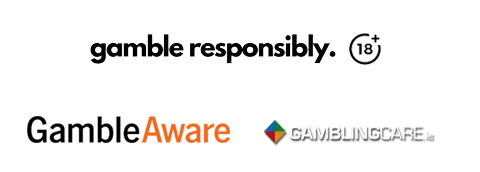Poker Theory: when and how to use the Gap Concept
- Written by David Bet

An important concept in poker, especially in tournament poker where survival is paramount and players cannot reach back into their pocket to replenish their stacks, is a concept known as “the Gap Concept.” It was first introduced by renowned poker author David Sklansky.

What is the gap concept?The gap concept simply suggests that it takes a better hand to call a raise than it takes to make the first raise.
The "gap" describes how big the distance is between the value of the raiser’s hand and the value of the potential caller’s hand. This "gap" increases when playing against a tight opponent and decreases when playing against a loose opponent.
In a tournament, this gap is often extremely high. In other words, in a tournament it is often right to open raise with hands far inferior to those with which you would need to call someone else who open raised.” He explains that the underlying principle behind this is that “you avoid confrontation with those who have already shown strength, and take advantage of those who are trying to preserve their chips.
Gap concept examplesExample #1: You have Ace-Jack suited on the button. An extremely tight player who you have only seen raise three times, and every time it was a big pair or big ace, has raised to 4x the big blind from early position. Many players would call here because of their positional advantage. If you are applying the Gap Concept you should fold because of the likely strength of your opponent's hand. I'm not saying you should always fold Ace-Jack suited in this situation, but it's something you need to consider. What are you going to do if the flop comes jack high? Ace high? By calling with trouble hands such as these in situations where your opponent's likely hands have yours dominated, you will find yourself facing very difficult decisions post-flop and can end up costing you a significant amount of chips. The Gap Concept is trying to help you avoid these difficult confrontations by saying “fold here please.”
Example #2: Same hand and position as in Example #1, only this time the player who has raised from early position is a maniac who has raised 8 of the last 12 hands. Now your gap is small and the strength of a hand like Ace-Jack suited is high. Applying the Gap Concept here, not only could you call... but you should more than likely raise because the probability that your hand is the best hand here is high.
Example #3: You are first to act from the cutoff. The three players left to act after you all have medium sized stacks and look as if they are trying to survive to make the money. You look down and see 7-3 off. You can apply the gap here and raise because you know that you likely will win the hand because your remaining opponents will fold. The gap here is large because of your opponent's tendencies.
Example #4: Same scenario as in Example #3, except this time the big blind is a big stack who has shown a tendency to call raises of his blinds. This is one of the exceptions that Sklansky talked about. Here you would need a better hand to raise with so 7-3 off is no good and should be folded. Because of your loose, big stack friend in the big blind the gap is small.
Example #5: Same scenario as in Example #3, except this time the big blind only has 2 big blinds left after posting his big blind. This is another exception explained by Sklansky. When you have an opponent who is so short that their likelihood of calling a raise out of desperation or pure pot odds is extremely high, then you need a better hand to open raise with. 7-3 off is not that hand and should be folded. The short stack in the big blind makes the gap small.

How to use the gap concept
Awareness of this principle can prove to be beneficial the next time you find that the action is on you and there has been no raise from any other player. For example, you may have a speculative hand like JTs or something similar, but if you make a raise, as far as the other players at the table are going to know you could have a hand like AQ, AK or JJ+. This means that weaker hands like AT, KJ and so on are likely to fold to your raise.
Now, this is not to suggest that making raises with any old hand in Texas Hold em is a profitable play, but this example simply highlights how being the initial raiser can wield a lot more power than you may have originally thought. If you know that your raise is going to push out a certain range of hands, you can start to use it to your advantage in certain situations.
Gap concept evaluation.When you call a raise, it is indicating to your opponent and the rest of the table that you have a strong hand. However, when a player raises, it does not necessarily mean that they have a strong hand, as they could just be playing aggressive poker.
Therefore this is where the gap concept is used to show how it takes a stronger hand to call a raise than it does to make the raise in the first place. The gap concept is used to help show you the advantages of aggressive play and how you must be selective about the hands that you play with in the face of a raise.

BEST SITES WHERE TO PLAY POKER:
 £5/8$ free. No deposit required. Sign up now!
£5/8$ free. No deposit required. Sign up now! 100% up to $500. Register and start playing!
100% up to $500. Register and start playing!  200% first deposit bonus up to £1250. Free download
200% first deposit bonus up to £1250. Free download  £/€50 free - no deposit necessary! Go to the WSOP
£/€50 free - no deposit necessary! Go to the WSOP 100% up to €325 Extra On First Deposit
100% up to €325 Extra On First Deposit Choose your own bonus. $50, $1000 or $2500?
Choose your own bonus. $50, $1000 or $2500? €2500 Bonus. No charge on deposits & withdrawals
€2500 Bonus. No charge on deposits & withdrawals Double your money, get a 100% welcome bonus
Double your money, get a 100% welcome bonus Get your €100 sign-up bonus now. Play in browser
Get your €100 sign-up bonus now. Play in browser Open a new account, earn a 100% bonus up to $1000
Open a new account, earn a 100% bonus up to $1000

